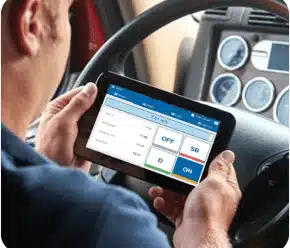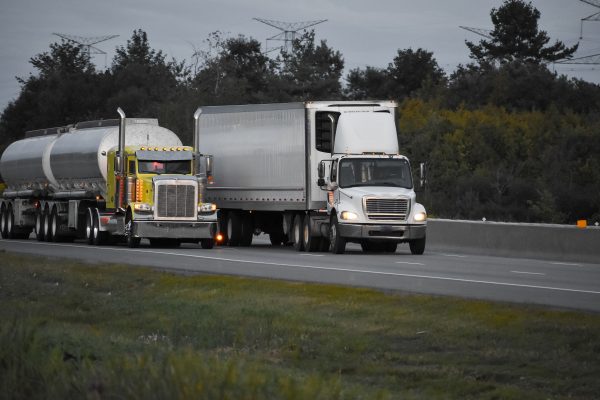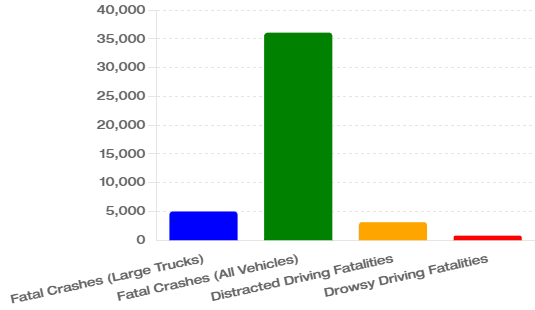Fleet drivers face numerous challenges on the road, from long hours and irregular schedules to physical and mental fatigue. However, there are solutions that fleet managers and drivers can implement to address these challenges and promote a healthier work-life balance. Wellness programs, flexible scheduling, and family support initiatives are examples of how the trucking industry can help drivers manage their work duties while maintaining their well-being.
In this post, we’ll explore several practical strategies for improving the work-life balance of fleet drivers, focusing on their mental, physical, and emotional health.
Wellness Programs for Fleet Drivers
Given the physical and mental demands of driving, truck drivers are at higher risk for various health issues, including obesity, sleep disorders, and chronic stress. Wellness programs designed for fleet drivers can help address these challenges, promote healthier lifestyles, and reduce burnout.
Critical components of a comprehensive wellness program include:
- Mental Health Resources: Offering access to counseling services or stress management workshops can help drivers cope with the pressures of the job. Providing support groups where drivers can share experiences may also reduce feelings of isolation.
- Fitness Initiatives: Encouraging regular physical activity can prevent the adverse effects of prolonged sitting. Companies can offer gym memberships, fitness apps, or even mobile workout programs that drivers can use on the road.
- Nutritional Guidance: Healthy eating tips and meal planning resources can make a huge difference. Offering nutrition workshops and guidance on making better food choices while on the road can improve overall health.
Ensuring Adequate Rest and Recovery
The Hours of Service (HOS) regulations ensure that drivers get sufficient rest, but it’s up to them to make the most of these rest periods. Quality sleep and recovery are essential to a driver’s well-being and job performance.
Strategies to enhance rest and recovery include:
- Plan Rest Periods in Advance: Identifying quiet, safe places to rest during routes helps reduce stress and allows for more restful breaks.
- Create a Comfortable Sleep Environment: Invest in quality bedding, control cab temperature, and use blackout curtains to make the cab a more restful space.
- Establish a Consistent Sleep Routine: Even on the road, a regular sleep schedule helps regulate the body’s internal clock, improving overall rest quality.
Family Support Programs for Fleet Drivers
When drivers feel supported by their families, they are better equipped to handle the stresses of the job. Strong family ties can provide emotional stability, reduce stress, and improve overall happiness, making it easier for drivers to focus on their work.
Communication Tools to Keep Fleet Drivers Connected with Their Families
Staying in touch with family members is essential for maintaining strong relationships. Here are some tools and strategies to help drivers stay connected:
- Video Calls: Services like Skype, Zoom, and FaceTime make it easy for drivers to have face-to-face conversations with their families, even when they’re miles away. Video calls are a great way to maintain a sense of closeness and stay involved in family life.
- Messaging Apps: Apps like WhatsApp, Facebook Messenger, and Telegram allow instant communication, making it easy to send quick updates, photos, and messages throughout the day.
- Family Calendars: Shared online calendars can help drivers stay in the loop with family activities, such as birthdays, school events, and appointments. This makes drivers feel more connected and engaged with their family’s daily lives.
Flexible Scheduling
When drivers have control over their schedules, drivers can ensure they get enough rest, reducing the risk of fatigue-related accidents. Drivers who can choose their hours are generally happier with their jobs, leading to lower turnover rates and higher retention. Furthermore, flexible schedules allow drivers to spend more time with their families and friends, which is crucial for their mental and emotional well-being.
How Fleet Managers Can Create More Predictable Schedules
Fleet managers play a crucial role in creating predictable schedules that meet both operational needs and drivers’ personal preferences. Here are some strategies that can help:
- Set Clear Expectations: Communicate with drivers about their preferences and work together to establish schedules that work for both parties. Clear communication helps avoid misunderstandings and ensures that drivers know what to expect.
- Plan Ahead: Use historical data to predict busy periods and plan schedules accordingly. By planning ahead, managers can offer more stability and predictability in drivers’ work hours.
- Offer Shift Swaps: Allowing drivers to swap shifts with colleagues can add flexibility to the schedule. This approach enables drivers to adjust their work hours without disrupting operations.
How Technology (ELDs, Telematics) Can Create Flexible Scheduling
Technology plays a vital role in enabling flexible scheduling by optimizing route planning and minimizing overtime:
- Electronic Logging Devices (ELDs): ELDs automatically track driving hours, ensuring compliance with Hours of Service (HOS) regulations. By using ELDs, fleet managers can monitor drivers’ hours in real-time and adjust schedules to prevent overworking and ensure that drivers have adequate rest.
- Telematics Systems: Telematics technology helps fleet managers optimize routes by analyzing traffic patterns, weather conditions, and road closures. Optimized routes lead to shorter travel times and reduce the likelihood of drivers working overtime.
- Route Optimization Software: Advanced software solutions can create efficient schedules by considering multiple variables, such as delivery deadlines, driver availability, and customer locations. This technology ensures that drivers can complete their routes within their scheduled hours, minimizing the need for overtime.
Final Thoughts
With the proper support, fleet drivers can achieve work-life balance. By implementing wellness programs, creating flexible schedules, and offering family support, fleet managers can help reduce stress and improve the well-being of their drivers. This promotes a healthier lifestyle for the drivers and increases retention, productivity, and job satisfaction across the fleet.

































